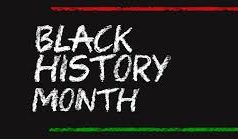As Black History Month draws to a close, now is an excellent time to reflect on all the nurses who paved the way for today’s increasingly diverse nursing workforce.
The numbers still don’t reflect the levels of diversity in the country as a whole, or even necessarily in the settings where they work, but African-American and black nurses are entering the nursing profession and earning advanced nursing degrees in greater numbers than ever before.
According to the Bureau of Labor Statistics, the nursing workforce is achieving greater diversity, but there’s still a long way to go. While the 2015 National Nursing Workforce Study stated 19.5 percent of nursing respondents reported a racial or ethnic minority background, the rate was even higher among newly registered nurses.
With a nod to early black nurses like Sojourner Truth or Harriet Tubman, who each paved the way for minority nurses to follow, nurses are expanding into many specializations and gaining higher degrees. With the current push to have 80 percent of nurses educated with a completed bachelor of science in nursing by 2020, higher ed and advanced degrees are an important part of getting ahead in nursing. Of the 176,000 nurse practitioners, 8.5 percent are African-American. And of the 3,102,000 registered nurses, 11.9 percent are African-American.
Minority nurses continue to make big strides in increasing the diversity of the overall nursing population. According to American Association of Colleges of Nursing (AACN) figures, the percentages of black or African- American nurses earning master’s or doctoral degrees has increased significantly in the past 10 years.
In 2006, 10.6 percent of those earning doctoral degrees were African American. In 2016, that percentage jumped to 16.2. And in those same years, the number of those earning master’s degrees also saw a percentage jump. In 2006, 11.3 percent of those going for a master’s degree were black. Ten years later, the percentage was 14.3. Overall, the percentage of minority nurses seeing nursing degrees hovers at about 30 percent of the total.
All that good news helps patients who say they want to see a diverse workforce in the healthcare professions. Many patients feel comfortable with someone who looks like them, but, more importantly, a diverse workforce helps spread culturally competent nursing practices. The entire nursing staff may not represent the ethnic diversity in a given setting, but they can learn from those who might understand certain cultural traditions, languages, or practices. All that understanding makes for better patient care and outcomes and an especially effective nursing staff.
So as Black History Month draws to a close, take a few moments to reflect on how far African-American and black nurses have come and the essential care and understanding they provide to the public. And take a moment to take pride in being part of that.
- WOC Nurses Week Highlights Specialty - April 16, 2024
- Honoring Radiology Nurses Day on April 12 - April 12, 2024
- Travel Offers New Career Possibilities - April 8, 2024



